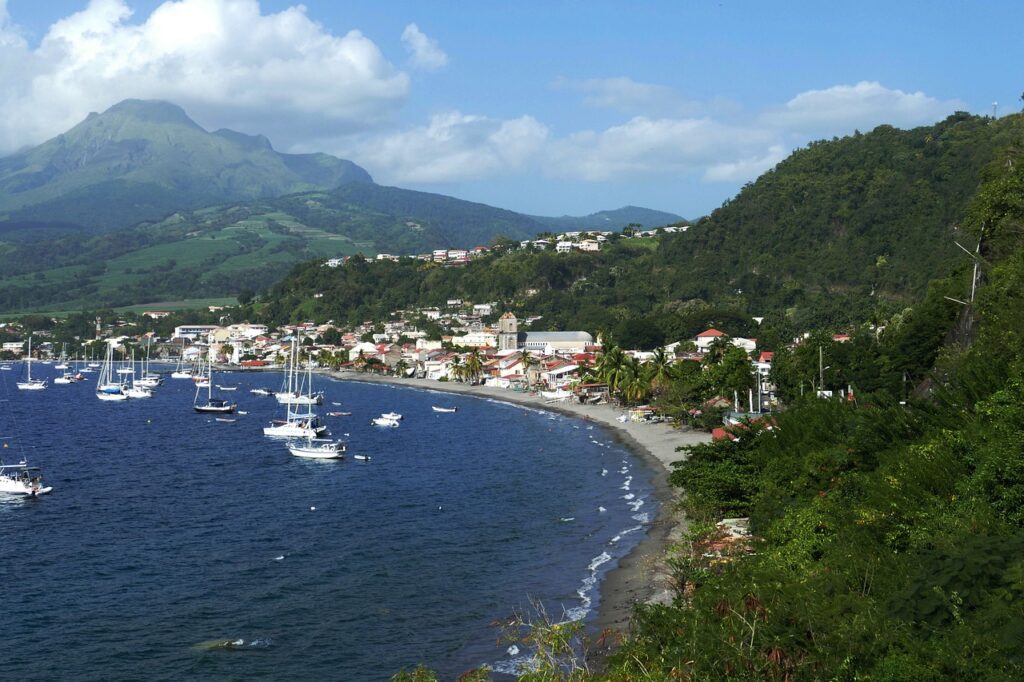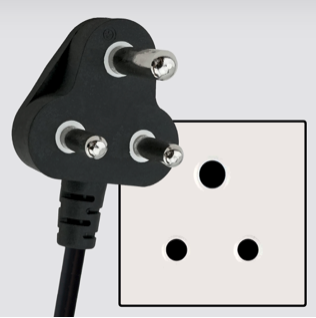Martinique / Matinik / Madinina – Let’s explore here
What’s it like in Martinique?
Martinique is a volcanic island located in the Caribbean Sea in North America. As an overseas department of France, it is part of the European Union. It has a population of around 350,000 people, about one fifth of whom live in the capital city, Fort-de-France.
The island is 43 miles (70 km) long and 19 miles (30 km) wide. It consists of a central plain where the majority of the people live, with mountains to the north and hills to the south. Martinique’s highest peak is the volcano, Mount Pelée, at 4,583 ft (1,397 m) above sea level.
Martinique relies heavily on tourism like many other Caribbean islands.

A bit about the history of Martinique
Martinique has a history influenced by indigenous cultures, European colonisation, slavery, and its current status as part of France.
Early History
Before European arrival, Martinique was inhabited by the Arawak and Carib peoples. Christopher Columbus landed on the island in 1493, but it remained largely uncolonised by the Spanish. The French began to settle on the island in the 17th century.
French Colonisation and Slavery
In 1635, Martinique was officially colonized by France, and it became a major producer of sugar, coffee, and later, bananas, relying heavily on African slaves brought to work on the plantations. The transatlantic slave trade fueled the economy, making Martinique one of the wealthiest French colonies.
Slave Revolts and Abolition
There were several slave uprisings during the 18th century, but it was the French Revolution in 1794 that led to the first abolition of slavery in the French colonies. However, Napoleon Bonaparte reinstated slavery in 1802. Slavery was finally abolished in Martinique in 1848 following a major revolt and the influence of the abolitionist movement in France.
Post-Slavery and 20th Century
After the abolition of slavery, Martinique’s economy remained focused on agriculture, particularly sugar and banana cultivation. In 1946, Martinique became an overseas department of France, gaining equal political status and rights as the regions of mainland France. This shift led to infrastructure improvements, increased political representation, and closer integration with France.
Modern Martinique
Today, Martinique is an integral part of France, with representation in the French National Assembly and Senate. The island is known for its cultural blend of French and Afro-Caribbean influences, its natural beauty, and its thriving tourism industry. However, Martinique also faces economic challenges, including high unemployment rates and occasional debates over autonomy and independence.
Martinique road trip
Martinique is our ninth planned stop on our road trip through the islands of the Caribbean. Having explored Saint Lucia, our next stop is Dominica.
Travelling overland between the islands is quite prohibitive due to the lack of transportation options. Travelling between different island countries via ferry is possible, however, ferries only operate between some islands. Chartering private boats between islands is also possible, although travelling with a car in this way is prohibitive. Flying is another option, although again, flights only operate between some islands.
Map of our road trip through Martinique

This is a map of our planned route around the island of Martinique, starting and ending in the capital, Fort-de-France.
Weather in Martinique
When is the best time to visit Martinique?
The best time to visit Martinique is from February to April. During these months, the islands have 7-8 hours of sunshine per day and rainfall of 3.2 – 4.8 inches (82 – 123mm) per month. The temperature ranges from 22 – 30°C (72 – 87°F).
When is the worst time to visit Martinique?
The worst time to visit Martinique is from June to November. During these months, the islands still have 7 hours of sunshine per day. However, humidity rises and it rains an average of 6.6 – 10.3 inches (167 – 261mm) per month. The temperature ranges from 24 – 32°C (74 – 89°F).
Hurricane Season in the Caribbean
Hurricane season in the Caribbean runs from June 1 to November 30. Storms tend to be more frequent and more severe in the latter half of the season.
Hurricanes are least likely during December, January and February.
Travel in and around Martinique
Ferries to other Caribbean island countries from Martinique
Travelling between Fort de France in Martinique and Dominica
L’Express des îles Ferries travel between the islands of Martinique and Dominica five days per week and the sailing takes2¼ hours.
Travelling between Fort de France in Martinique and Guadeloupe
L’Express des îles Ferries travel between the islands of Martinique and Guadeloupe five days per week and the sailing takes 5 hours.
Travelling between Fort de France in Martinique and Saint Lucia
L’Express des îles Ferries travel between the islands of Martinique and Saint Lucia five days per week and the sailing takes 1½ hours.
What’s it like to drive in Martinique?
They drive on the right hand side of the road in Martinique. The majority of the roads in Martinique are in a fairly good condition, with most being maintained regularly.
Do you require an international driving permit in Martinique?
We’ve created a dedicated page to driving abroad, which answers this question, and more, which you might find helpful.
Can you use your UK driving license when driving through Martinique?
We’ve created a dedicated page to driving abroad, which answers this question, and more, which you might find helpful.
Do I need a carnet de passages to drive in Martinique?
We’ve created a dedicated page to driving abroad, which answers this question, and more, which you might find helpful.
What are the speed limits in Martinique?
The speed limits for cars in Martinique are:
- 30 mph (50 km/h) for urban driving
- 50 mph (80 km/h) outside of built up areas
- 70 mph (110 km/h) on dual carriageways
- 80 mph (130 km/h) on motorways
What currency do they use in Martinique?
In Martinique they use the Euro. Cash is widely used. The use of credit / debit cards is widely accepted in tourist areas. Travellers cheques are not generally accepted. There are many ATMs in tourist areas, although not all accept foreign issued cards.
You should make yourself aware of the amount that your bank charges you for using credit and debit cards abroad. Often credit cards are cheaper for purchasing items directly, and for withdrawing cash from ATMs.
What language do they speak in Martinique?
They speak French and Antillean Creole in Martinique. English is not spoken widely.
What time zone is Martinique in?
Remember, when you’re planning your next trip to take a look at what time zone it’s in.
Do I need a visa to visit Martinique?
We’ve created a dedicated, more comprehensive page on visas, which you should find helpful. Check it out!
Is wild camping legal in Martinique?
No, wild camping is illegal in Martinique.
What plug / socket type do they use in Martinique?
In Martinique they use plug / socket types C, D and E.



Health issues in Martinique
Is it safe to drink water in Martinique?
Yes, it is safe to drink tap water in Martinique. Bottled water is also readily available across the country.
What vaccinations are required for Martinique?
This NHS website is kept up to date with all relevant information on vaccinations in Martinique.
Phones in Martinique
What is the country calling code for Martinique?
The country calling code for French Guiana is +596
What are the emergency phone numbers in Martinique?
- The emergency number for police in Martinique is: 112 / 17
- In Martinique, the emergency number for ambulance is: 112 / 15
- The emergency number for fire in Martinique is: 112 / 18
If you’ve got some useful info that you’d like to share, let us know!
And don’t forget to check out all the other pictures!
